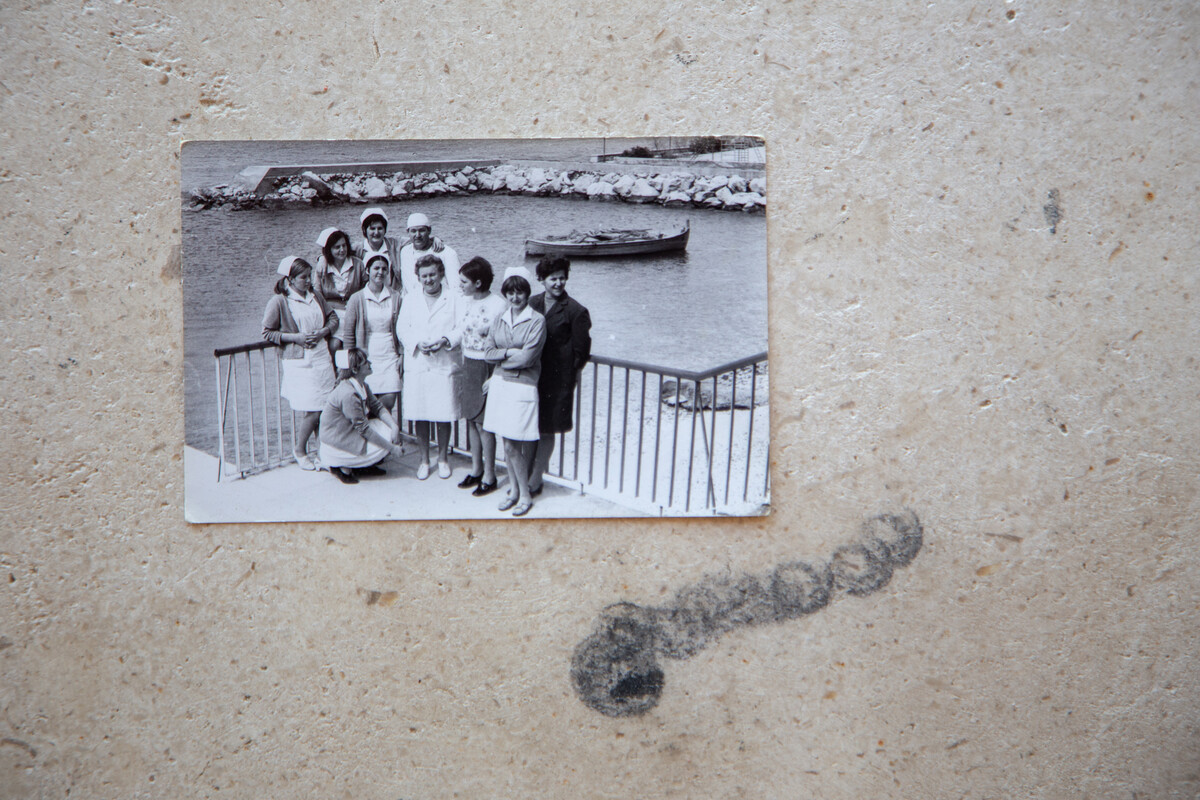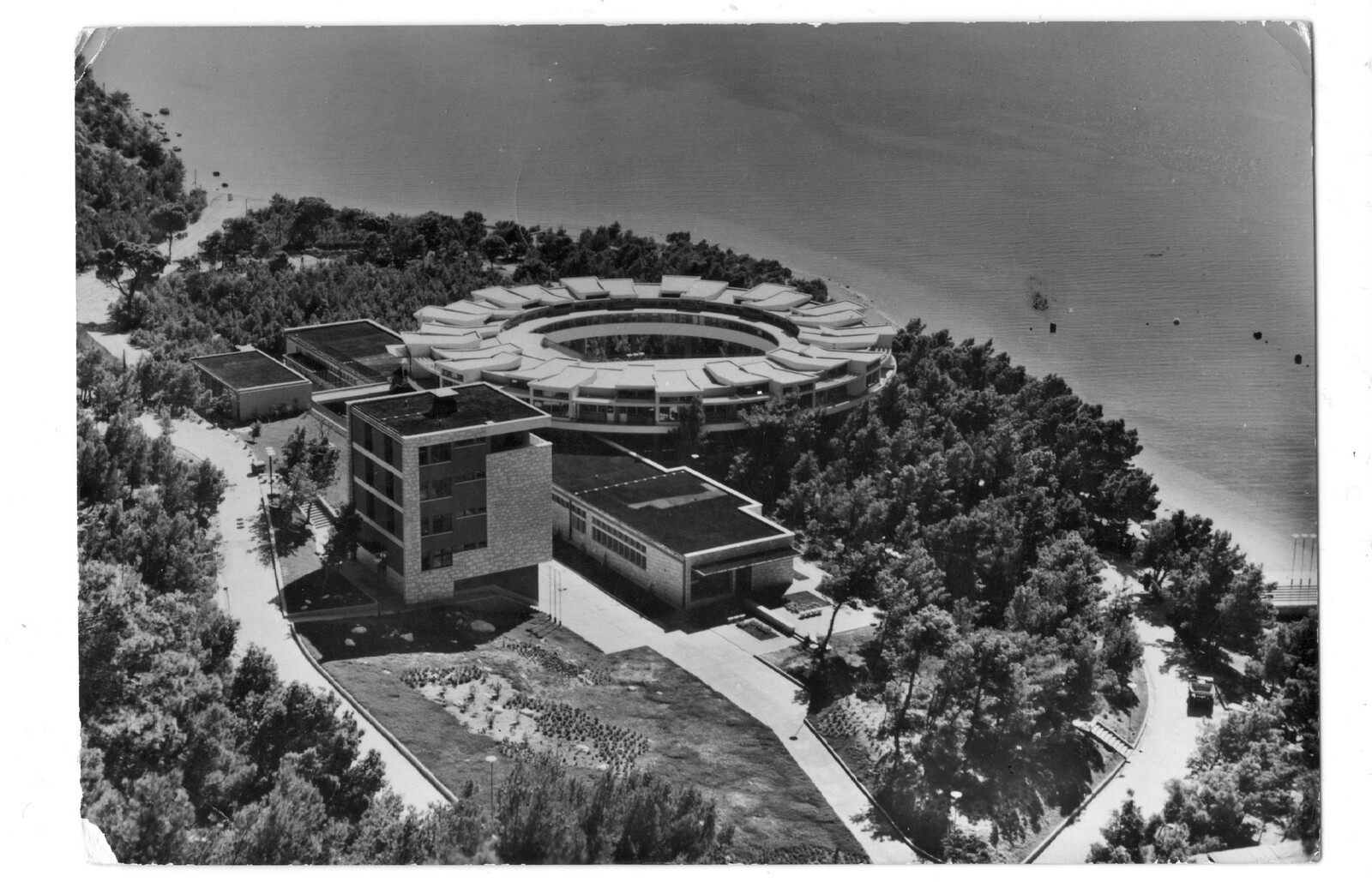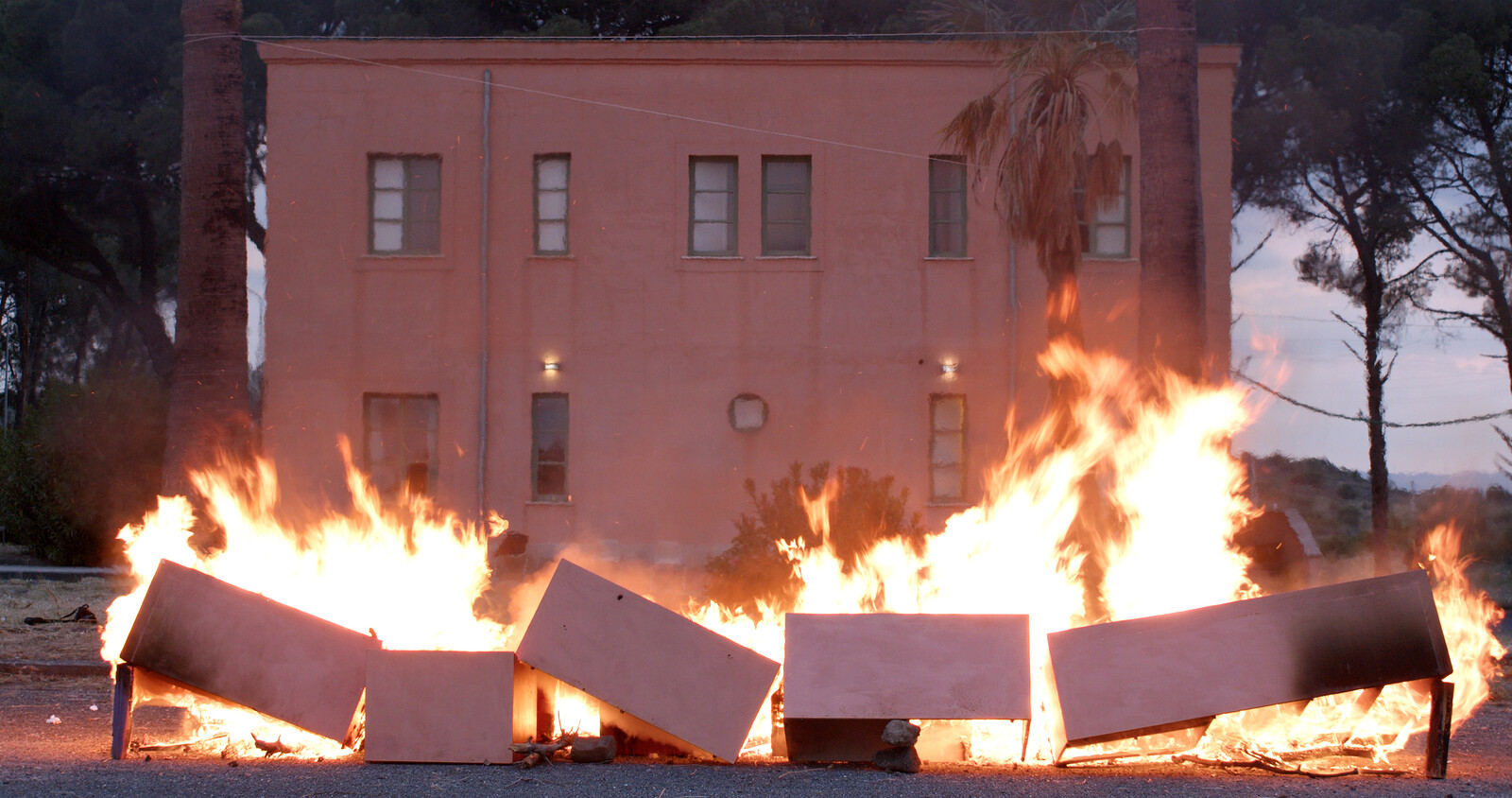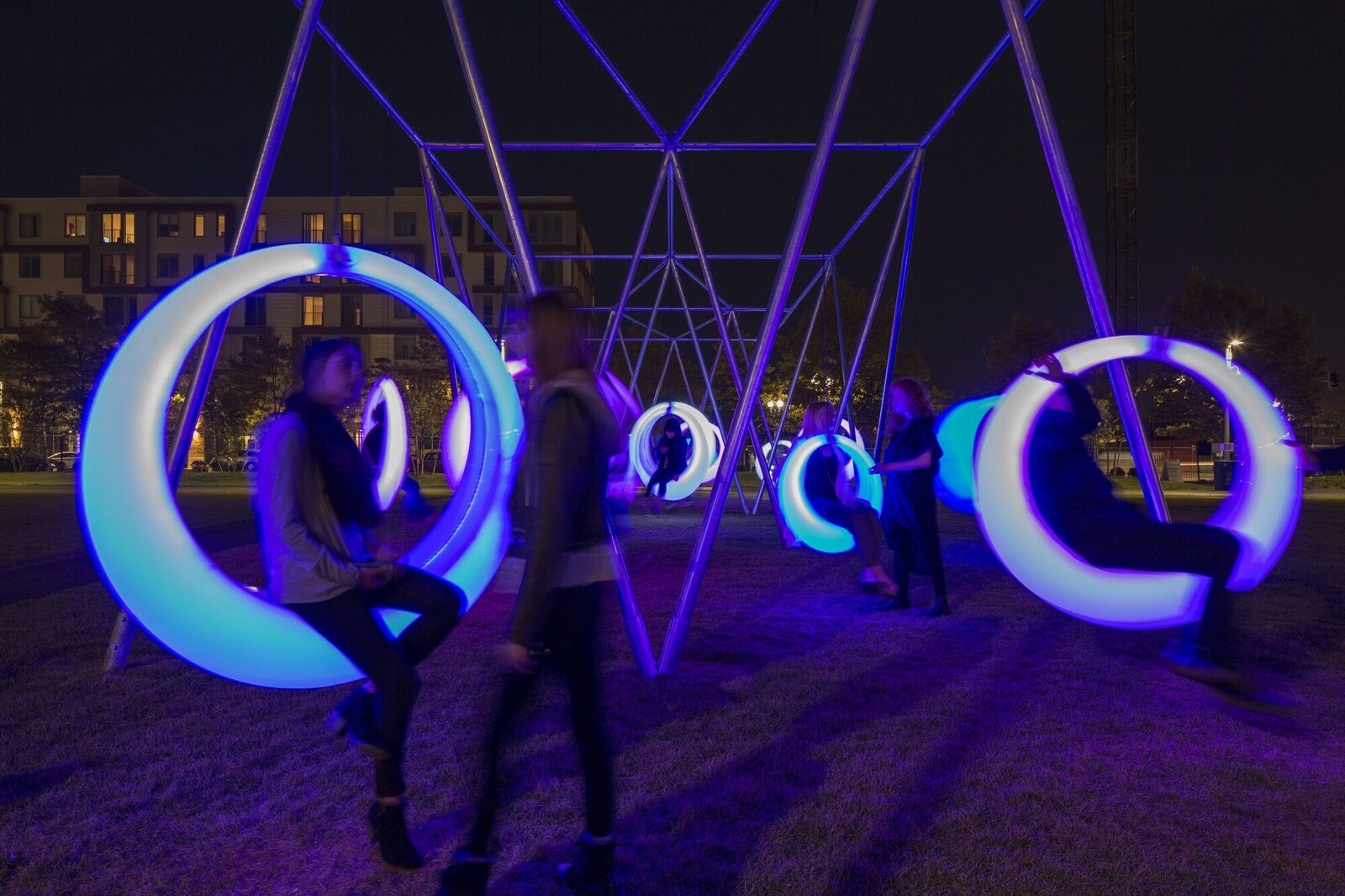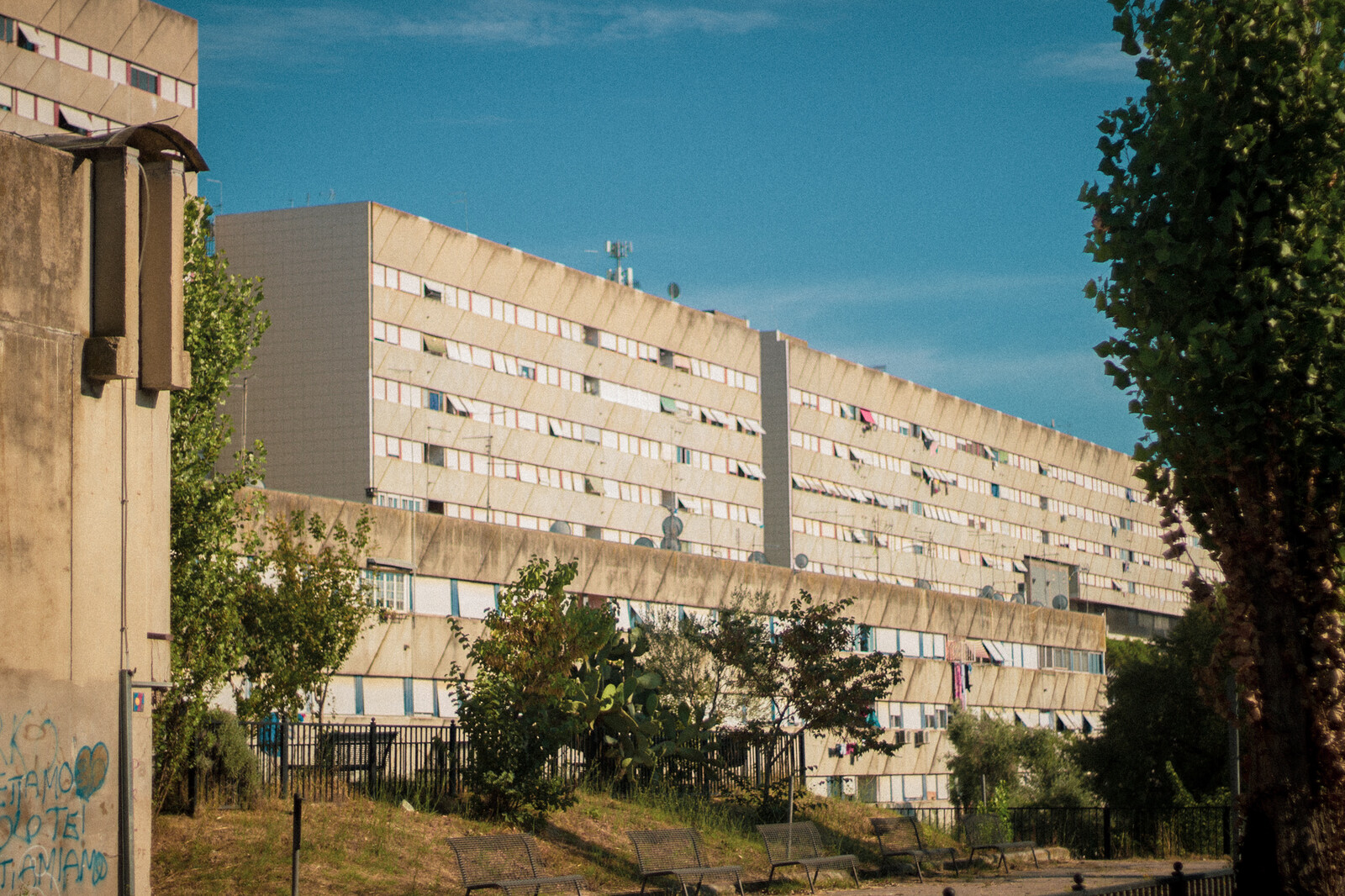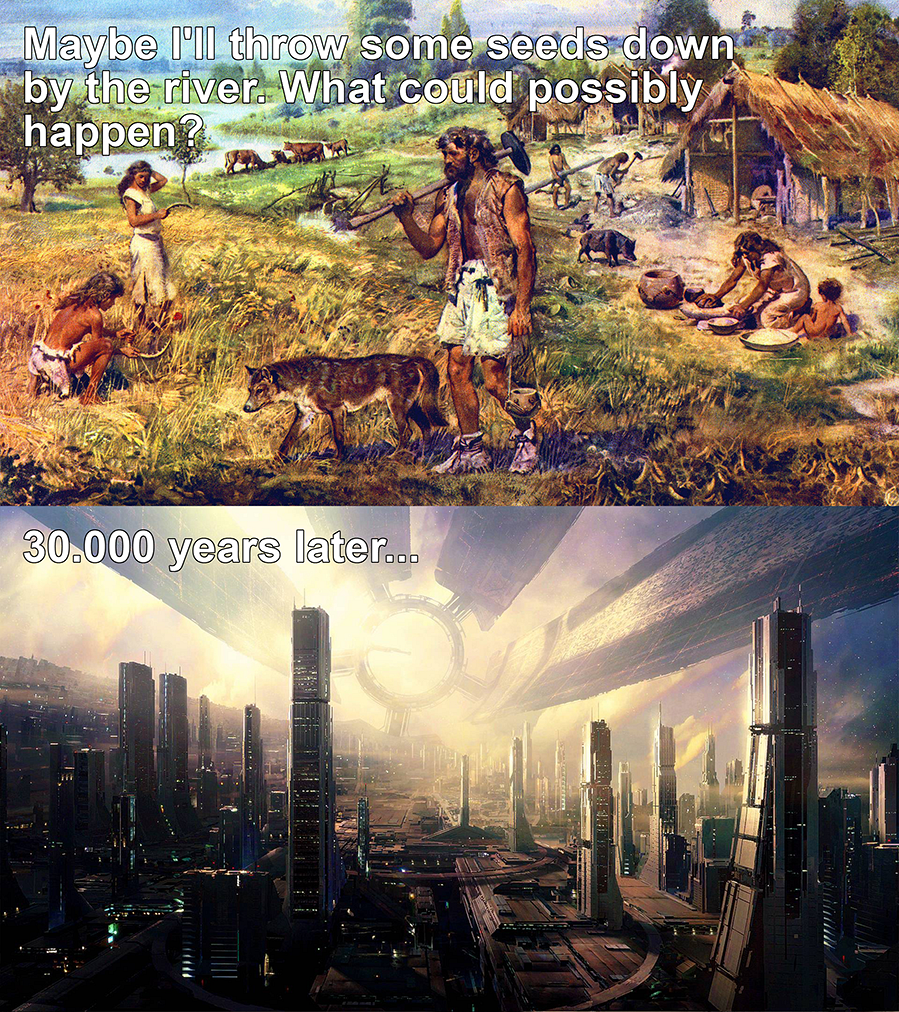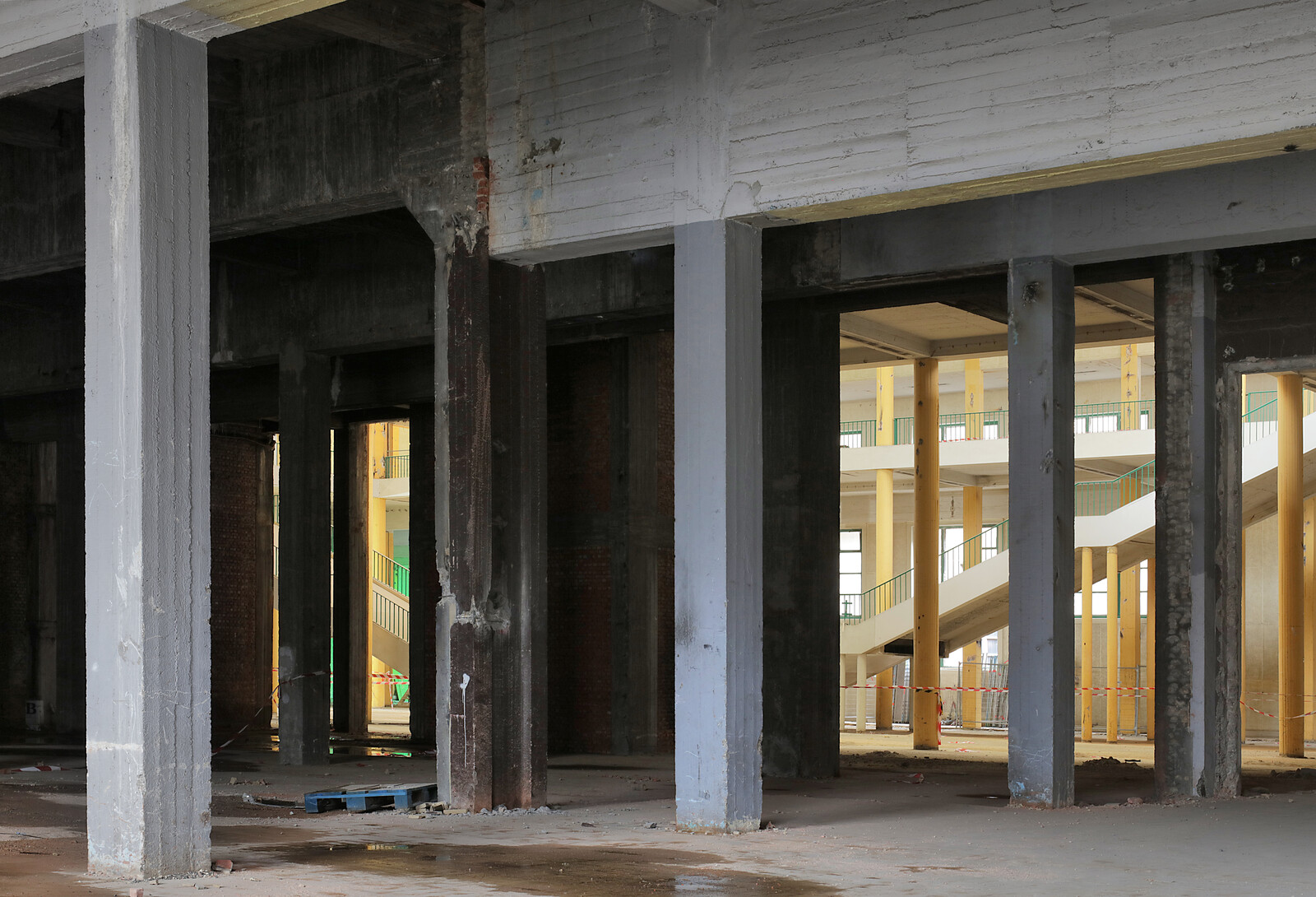1. Imperfect Care
Not all old factories can become cultural foundations; not all white sanatoriums in pine forests have the spotlight of contemporary design shining over them. Most of the built environment, even some the sleekest of modernist monuments, must seek other ways to survive. Understandably, not everything worth preserving can be preserved. But some buildings or sites have the potential to become something more than mere monuments for their communities, or for people who care about them. In order for them to do so, they must open themselves up to a wider range of strategies for care and repair than those traditional in the architectural profession.
On a policy level, caring about places is an integral element of the green transition and achieving the goals of the circular economy. In the lived reality of places, however, detailed care is also based on meanings that are uniquely local. While in today’s architectural discourses “care” has become a much-lauded value, both top-down guidelines and more curatorial acts of care have been less thoroughly articulated. Within this space, architecture and care must be negotiated unconventionally, in ways that are meaningful to designers and communities alike.
These often unnarrated pathways might be called “strategies from below.” In processes like this, many things remain imperfect. The results are not necessarily clear, controllable, or total, and perhaps may never even become whole again. But we must accept that the mediated image of a building as an imaginary or nostalgic dream can never be reattached to a singular experience or vision. While past modernity cannot be saved, it remains possible to save modern icons in all their naivety and utopianism. With new strategies of care, we might be able to find the future in what we still have from the past.
2. Marvels of Yugoslav Architecture
The Children’s Maritime Health Resort for Military Insured Personnel was designed by the modernist architect Rikard Marasović in 1965. Initially overseen by the Yugoslav People’s Army (JNA), the resort served as a sanatorium for children with respiratory diseases until 1973. Due to the economic challenges in maintaining a medical facility, the establishment was subsequently converted into a vacation resort for military personnel and their families, which facilitated the growth of mass tourism along the Dalmatian coast. However, after the onset of war in the former Yugoslavia, the Yugoslav People’s Army vacated the premises in 1991. During the conflict, the resort became a refuge for refugees and a training ground for specialized military units.
Following demilitarization in the 2000s, ownership of the building complex was transferred from the Ministry of Defense of the Republic of Croatia to a state agency, Club Adriatic. This was the result not only of institutional changes in the management of state property, but also the introduction of a new attitude towards everything state-owned. Amidst the societal changes that accompanied the rejection of socialist legacies, the Children’s Resort fell into a state of chronic decay that persists to this day.1
Despite its designation as protected cultural heritage by the Ministry of Culture and Media of the Republic of Croatia, the fate of the former health resort remains uncertain as it awaits sale on the market. Management by the State Property Office has failed to meaningfully preserve the building and has left it vulnerable to further deterioration. Its survival hinges on the advocacy and engagement of individual architects, researchers, and collectives striving to safeguard its historical significance.2
Like the Children’s Health Resort in Krvavica, its architect, Rikard “Riko” Marasović, has been almost entirely excluded from the history of Croatian architecture in the twentieth century. This was a significant omission, as Marasović epitomized a new breed of architect: a polymath, engaging in painting, design, public advocacy, urban planning, education, and conservation efforts. He was an active participant in social and political movements, and was involved in illegal activities with the National Liberation Movement after graduating from the Technical Faculty in Zagreb in 1942.3
His unruliness is evidenced by an obituary from 1987, which mentions Marasović’s unique creative personality as an artist-architect.4 Described as “uncompromising,” Marasović was known for his steadfast opposition to dogma and opportunism, a stance that often led to challenges in realizing his architectural visions. Despite having built relatively little, his contemporaries recognized his notable mark on Croatian architecture. In this regard, “the Children’s Hospital under Biokovo”—as Marasović affectionately referred to the building, in reference to the mountain range above Krvavica—stands as his most impressive achievement.
3. Hello from Krvavica
I’m sending you this photo from where I’m staying. The pines. I think you would love them. They keep quietly humming, on blue nights and quiet mornings, above me as I come out from the water and lie down. Most days I come down to the beach. Small pebbles crackle under your feet as you walk. I feel like there is a place here, it has been here underneath, before this moment and this future. Here they have built a facility for children, something I have never seen before. Up in the air! A real celebration of health. Here they can breathe I am sure.
What did people who visited Krvavica shortly after its completion write about the health complex in postcards or letters to their friends and family? There remains little information as to why the site was originally chosen. Perhaps the pines on the pebbly beach simply had a natural charm, or were deemed healthy according to modernist standards. Regardless, both the trees (although not a native species) and the resort appear today as equals.
4. The Iconizing Project
There are many phases in constructing a building, including its lifespan and its afterlife. What a building becomes, after its very first breaths, its adolescence, and its eventual midlife crisis, may not have anything to do with its architecture. On a spectrum of slow oblivion, horrible facelifts, overnight deconstruction, nips and tucks, total molecular body transformations, and even resurrection, everything is possible.
In the eyes of casual visitors, the children’s health resort in Krvavica has spent most of its adult life as an intriguing modernist structure on a quaint pebble beach. Over the past two decades, the resort has appeared in magazines, on movie screens, and along the walls of museums.5 All this attention, and perhaps even this article, has added to the potential iconicity of the building. But what exactly is it an icon of? And to whom? The Krvavica complex has been woven into histories that cannot be fully captured by focusing on its modern outlook. Its storyline contains numerous homespun and hand-stitched elements that are not easily understood in the context of modernist canon-making and architectural history writing.
5. To Cure a Place of Care
In recent years, numerous civil initiatives have emerged to restore the building, particularly with the aim of returning it to its original purpose as a health resort for those with respiratory diseases—an idea especially popular during the Covid-19 pandemic. In one such effort, after a communal cleaning action, a history of the resort’s chronic decay was narrated through an experiential journey—a walk and conversation through the premises.6 As participants traversed the corridors, chambers, and terraces of the circular structure, they were immersed in “architectural stories on the move.” The narrative intricately wove together the ebbs and flows of the life cycle of the sanatorium, from its inception as a haven for childhood illnesses to its gradual descent into a state of chronic alienation.
The walk was part of a program that encapsulated years of collaborative efforts by local and international architects, artists, and interdisciplinary collectives specializing in spatial and participatory practices. To Cure a Place of Care aimed to shift the material and immaterial environment of the resort from a “space of collective illness” to a “place of common healing” through a series of participatory interventions, including performances, peripatetic photo-therapies, the aforementioned walk, and workshops envisioning a community-centered approach to healing architecture.
6. Modern Icons: Tanning in Totality
If we look at the resort only in the context of contemporary visual content feeds, its particular modernity either reads as retrofuturist ruin porn or an off-the-beaten-path spectacle of “abandoned” or “forgotten” places of Eastern European splendor. In the background is a certain sentimentalism that arises for heroic ideals. While modernity and its futurism have had dangerous liaisons with totalitarian demagogues, there is also another reading that relates to the ethos of modern design as a world-turning, world-modifying, and “fun” style choices. Here, perhaps, is the cross-generational allure of high modernist creations, an express lane to architectural iconography, or today’s mediated fame.
This is all to say that the Krvavica complex is not a modest monument, but somewhat wondrous, oddly swanky, and certainly luxurious. Marasović’s vision of the Adriatic shores from the 1960s, which this building exemplifies, carries the flair of an aspirational lifestyle; a touch of modernity that was neither a rational necessity nor a sanitary addition, but something that seemingly spoke to him personally. As the abandoned resort piques viewers interests, it also comes with all the baggage of modernism, claiming its place and space in the name of progress.
7. Yugoslavia in Miniature
The Children’s Health Resort in Krvavica, and the employees and guests who frequented it, provides a vivid demographic portrait of the former Yugoslavia. The resort welcomed individuals from all corners of the former Yugoslavia, in diverse roles such as medical staff, administrative personnel, soldiers in military service, and transient guests. Locals still reminisce about the institution’s cosmopolitan ambiance, recalling the sound of disco music and performances by popular bands like Indexi on the summer terrace during the 1970s.
Among the resort’s workforce, a significant contingent hailed from the Makarska Riviera, particularly from the village of Krvavica itself. A former receptionist, a young woman from Makarska who began to work at the resort in 1972, bore witness to a memorable incident involving a cleaner from more rural regions of Yugoslavia that serves as a charming testament to the diverse backgrounds and perspectives that converged at the Children’s Health Resort. In a casual conversation, the cleaner, leaning on her broom in front of the reception desk, glanced briefly at the portrait of Josip Broz Tito adorning the wall. Mistaking the revered Yugoslav leader for another military figure, the director of the sanatorium, she remarked, “How handsome our director was as a young man!”

The Sound that Remains, by Joaquin Mora, examines the sonorous identity of the resort complex, its materiality, and its relationship with the territory.

Still from Rebeka Bratož Gornik’s film Timecapsule, which focuses on the enigmatic character of Rikard Marasović, the architect of the resort.
The Sound that Remains, by Joaquin Mora, examines the sonorous identity of the resort complex, its materiality, and its relationship with the territory.
8. Residual Sounds of Architecture and the Omnivoice of Community
Since 2022, the Society of Architects of Istria (DAI-SAI), in collaboration with LINA, has brought together local and international artists to address local aspirations for the resort building to be better appreciated and preserved. Conversations with former employees of the sanatorium served as starting points for research projects and film productions that use existing local knowledge of the building to redefine concepts such as collectivity, subjectivity, performativity, and materiality. As an experimental form of social preservation, these films aim to create a kaleidoscope of fiction about the society that created the health resort and about the coming communities that might govern it in future.
Chilean director Joaquín Mora’s The Sound That Remains focuses on the experience of inhabiting an uninhabited building. Through meticulous investigation, documentation, and reinterpretation, Mora’s film redefines the interplay between the residual sounds emanating from the abandoned structure and its contemporary subjects. Visual and auditory recordings of the building in its current state of emptiness and neglect serve as a poignant backdrop for choreographed performances featuring members of a local female choir, Tempet. Through this juxtaposition, viewers are invited to contemplate the interplay between sound and space, memory and perception.
Slovenian director Rebeka Bratož Gornik’s Timecapsule delves into the enigmatic persona of the architect. Through interviews with architectural researchers, local historians, and the community of Krvavica, the film scrutinizes the architect’s authority, the past, present, and potential future of the complex, and its associated community. Marasović’s character is played by a prominent local actor—an amateur who lends authenticity to the portrayal. The score was composed by a local musician known as Babin zub—a nod to the majestic rock formation overlooking the coastal village.7 By challenging conventional notions of architectural authorship and agency, the film prompts viewers to reconsider the dynamic interplay between architects, their creations, and the communities they serve.8
9. From Care to Cure and Back
In April 2023, an international performative workshop–symposium was conducted in Pula, Croatia, that delved into critical architectural heritage under the title “From Care to Cure and Back.”9 While this meeting took place almost 600 kilometers away from Krvavica, similar questions related to local communities and built heritage are shared all over the Adriatic coastline, which is today dominated by tourism-driven urban development. The gathering was formed by a multidisciplinary group with a shared interest in future-oriented approaches to care as a durational and intersectional process, a group that has continued collaborating after the event, combining efforts and knowledge to demonstrate the plurality of forms of care.10
Starting with investigations into small scale local actions in Krvavica, the group has expanded its scope to research case studies in other contexts (Slovenia, Montenegro, Italy, and Finland). For example, the Paimio Sanatorium in Finland and the Marchiondi Spagliardi Institute in Milan are both sites that are deeply anchored in the high modernist canon, but that also have to rely on the global design community’s fickle attention to secure their potential futures. These places need dedicated care, and each has its own range of questions, available resources, and possible outcomes. Lessons from Krvavica and these other sites are all part of the same conversation.
10. To Whom It May Concern
Although “the mysterious object in the pine forest” evokes nostalgia and attracts international architectural interest, the Children’s Sanatorium in Krvavica and its contemporary and local reality are shaped by current and legal uses, questions of ownership, and social tendencies that extend far beyond architectural appreciation.11 The reality is that modern architectural sites are not adequately acknowledged as cultural heritage, and local development plans often have stronger political sway than preservation guidelines.
Even after years of transdisciplinary work within the community, questions about how to develop strategies for the care of the Children’s Health Resort in Krvavica, and subsequently for its healing, remain open. However, there is a recognition of the need to approach architectural care as an ongoing process, and that forms of care are everyday practices, methods of survival, and ways of futurization. Or, in other words, if you are not rich or famous, if your history is marred by regime changes, war trauma, mass tourism, and its monoeconomic development models, you have to make do. You will utilize whatever funding or project structure is at hand, and maybe accept whatever interests lie beneath it. But it is not just whatever.
To become citizen architects and curators of material and cultural resources—to get involved in repairing, restoring, rebuilding, and reconstructing modern monuments, in both the physical and the canonical sense—we need to strive for a more nuanced understanding of these sites and their contexts. We need research, both scholarly and artistic. We need conversations, visions, and dreams as well as knowledge, built over time.
Of course, the Krvavica resort faces an urgent need for restoration and repair. But if such a future is not in sight, we can at least observe the life of the building with a broad spectrum of artistic and creative gazes. We might also have to accept that there may not be a path to fully restoring the building in its totality. Parts of such a world are simply gone, and we may not miss them. But there are some parts and snippets that we still clearly enjoy and can interpret in novel and more inclusive ways. In Krvavica, forms of care are becoming practices, acts, and ways of surviving, futurizing, reclaiming, acculturating, and more. Such acts can be led by communities, artists, designers, architects, historians, editors, curators, and, possibly, everyone who is willing to care.
The saga of the establishment and subsequent decline of the Children’s Health Resort was first unveiled to the local public in the exhibition project (Dis)Trust the Storyteller: The Case of Krvavica curated by the association Slobodne veze (Loose Associations) at Salon Galić in Split in 2021.
In the inaugural publication on the Children’s Health Resort in Oris magazine, back in 2008, architect and researcher Miranda Veljačić reflected on the poignant remnants left behind. She observes the devastated pieces of furniture, the beach equipment, and the canoes, all of which speak of the luxury that belonged to the youngest and the ill. This evocative statement underscores the stark contrast between the past opulence of the resort and its current state of neglect. In her assessment, the resort stands as a testament to an era when societal empathy and architectural innovation were seamlessly intertwined. Miranda Veljačić, “Perja na buri / Feathers in the Bora,” Oris 50, 2008. See ➝.
According to architecture historian Tamara Bjažić Klarin from the Institute for Art History in Zagreb, as presented in her lecture titled “Parallel Track of the Architect Rikard Marasović: A Sketch For Biography And Further Exploration,” which took place in Pula in 2023.
Igor Skopin, “In Memoriam Rikard Marasović (1913-1987),” Čovjek i Prostor 34 (1987): 5.
The complex was, for example, included in MoMA’s 2018 exhibition Toward a Concrete Utopia: Architecture in Yugoslavia, 1948–1980.
This experience engaged the local and professional community and formed part of the international project “City-Hospital,” spearheaded by associations f.act from Graz, Intermundia from Zagreb, and mART from Makarska, and sought to prompt reflections on the intersection of illness, spatial environments, and healing practices. The communal cleaning action, as part of the program, was documented by filmmaker Matija Kralj Štefanić in a video To Cure a Place of Care - Liječenje lječilišta / Krvavica (2021), which can be seen here ➝.
The film features interviews with architecture professionals such as Miranda Veljačić, an architect and researcher from Split, Stevan Rodić, an architect and urbanist from Novi Sad, and Rajko Jurišić, a local historian from Baška Voda. Former employees, such as Ineska Paić, a former receptionist from Makarska, and Josipa Balajić, an art historian and pedagogue from Krvavica, offer insights into the building’s history and significance. Local actor Lovrenco Laušić brings Marasović’s character to life, while Bojan Divić provides a compelling voice-over narration, further enriching the film’s narrative collage.
Both films were showcased to local and wider audiences as part of the “Culture in Krvavica” program, featuring a variety of European film premieres, in 2023. Joaquín Mora’s film was screened at the prestigious Architectural Film Festival Rotterdam (AFFR), while Rebeka Bratož Gornik’s film found its audience at the Ark Rex architecture film festival in Helsinki, highlighting the significance of the project on an international stage.
More information about the program can be found here ➝.
Under the auspices of LINA and DAI-SAI, this has led to the creation of a zine, short films, texts, documentation, research, talks, and performances. Supported by the editorial construct Adria, the fanzine gathers thinking and contemporary cultural notes, as well as archival snippets, in hopes of weaving together something akin to an experience of a nostalgic road trip along the coastal highway, while remaining acutely aware of the rapidly accumulating crisis around us. Adria, S’lim 7 (July 2022), ➝.
“The Mysterious Object in the Pine Forest” is the name of an episode in the renowned documentary series Slumbering Concrete, which explores the modern architecture of the former Yugoslavia, its utopian aspirations and its disputed future, produced by the Hulahop production company for Croatian Radiotelevision in 2016.
Framing Renovation is a collaboration between e-flux Architecture and the Faculty of Architecture of the University of Ljubljana within the context of the 2023–24 LINA Architecture Program.
